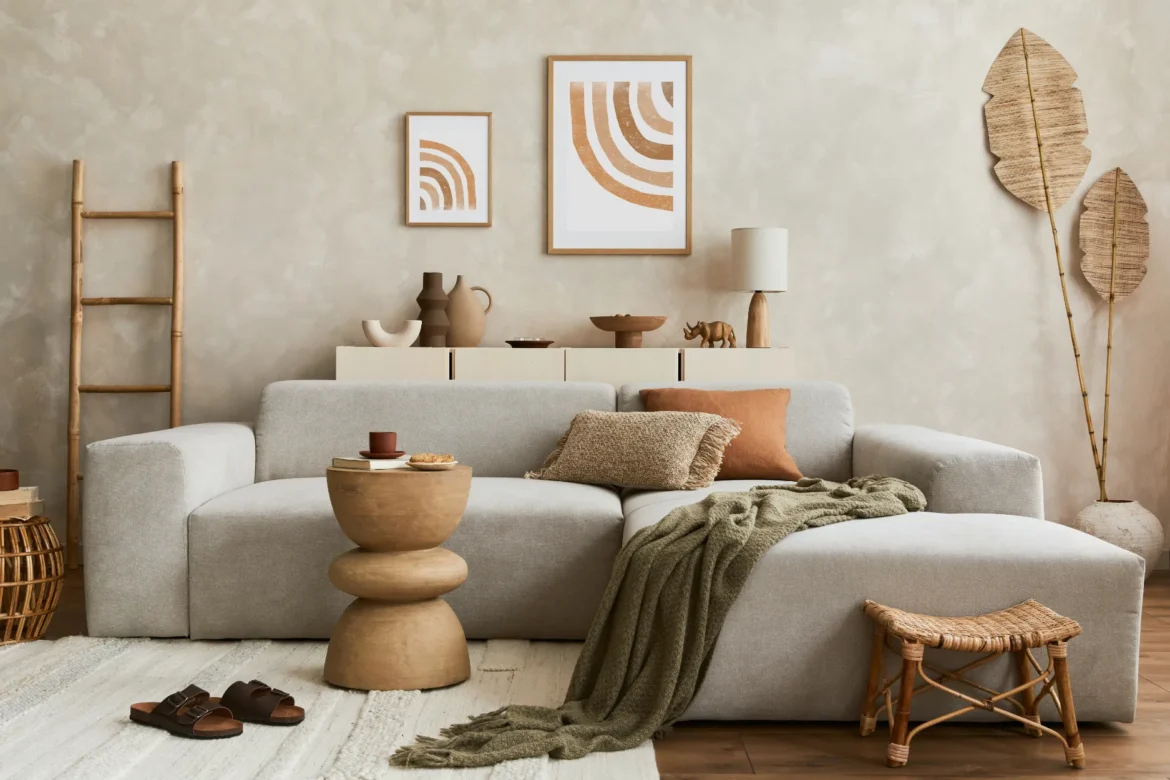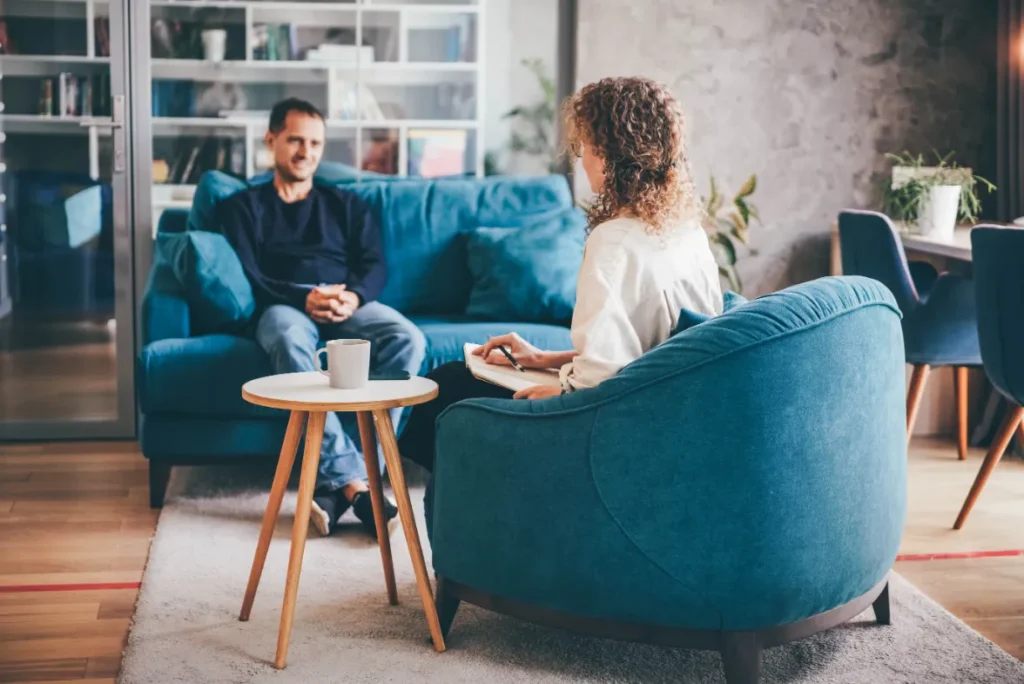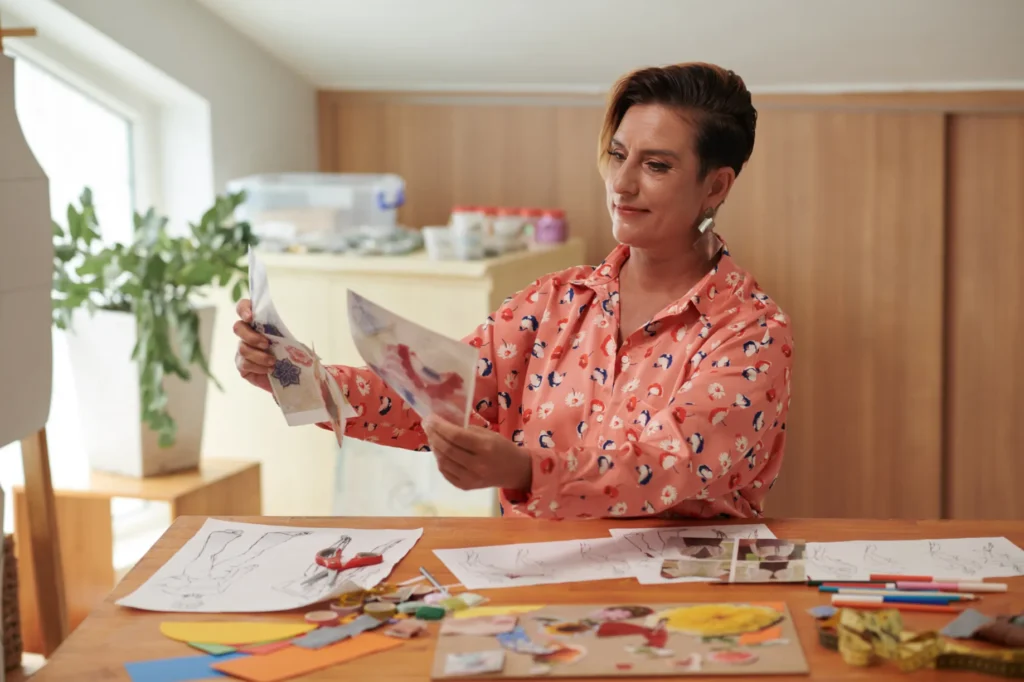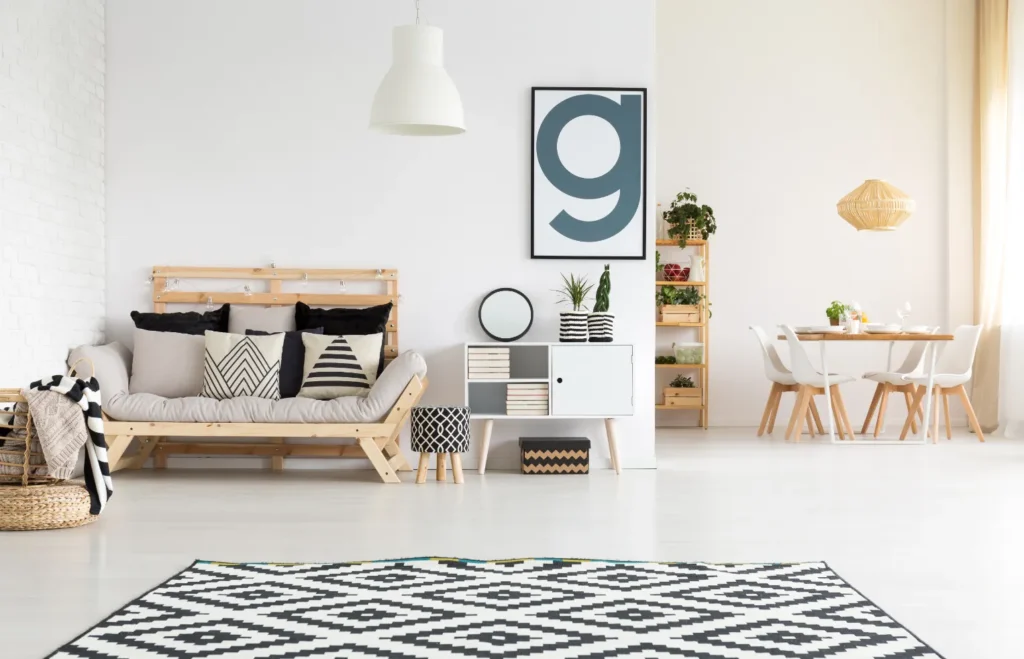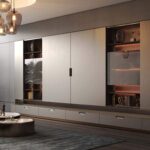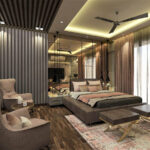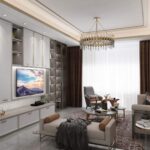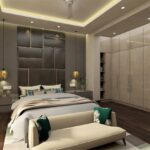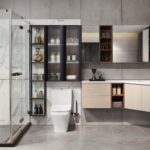3 Powerful Principles Of Interior Design: Unity, Proportion & Balance
Overview
Discover the key Principles of Interior Design and transform your home. Learn how Unity, Proportion, and Balance create stunning living spaces.
“To design is to communicate clearly by whatever means you can control or master.”
– Milton Glaser
In the realm of interior design, the heart of every home comes to life. Whether you are a homeowner with a penchant for style or an interior design professional on a quest to hone your craft, you are stepping into the enchanting world of home interior design. At the core of this journey are the guiding stars—the principles of interior design.
Our homes transcend mere walls and roofs; they become an embodiment of our individuality and a canvas for our preferences. Be it the cozy living room where you unwind at the end of the day, the elegant dining area that bears witness to unforgettable gatherings, or the tranquil bedroom where your dreams find refuge, the realm of home décor gracefully unites form, function, and aesthetics.
The principles of interior design act as the compass, directing us towards creating spaces that are not just visually enticing but profoundly functional. They form the bedrock upon which the foundation of inviting rooms is laid, rendering them indispensable for homeowners and design professionals alike.
Within this blog, we embark on a mesmerizing exploration of these principles of interior design, unveiling the hidden gems that breathe life into every well-designed space. You will delve into the intricacies of unity, proportion, balance, rhythm, contrast, emphasis, and the nuanced dance of scale and proportion. Think of these principles as the notes in a harmonious symphony, weaving together to create a tapestry of comfort and elegance within your living spaces.
For homeowners, this journey bestows valuable insights into infusing your surroundings with your distinct personality while upholding practicality. Picture crafting a living room that radiates warmth while optimizing space, a kitchen not merely dedicated to culinary pursuits but also fostering connections, or a bedroom that functions as a serene sanctuary away from the cacophony of the external world. These principles stand as your trusted guides, transforming your home interior design into a true sanctuary.
For interior design professionals, this blog becomes a wellspring of inspiration, a reservoir of knowledge, and a platform for refining your craft. The path into the universe of home interior design is dynamic and ever-evolving. In a landscape where trends, materials, and preferences constantly shift, a profound understanding of these foundational principles becomes increasingly vital. It isn’t just about adhering to trends; it’s about comprehending why they work and how they can be tailored to diverse spaces and individual styles.
The Fundamentals Of Home Interior Design
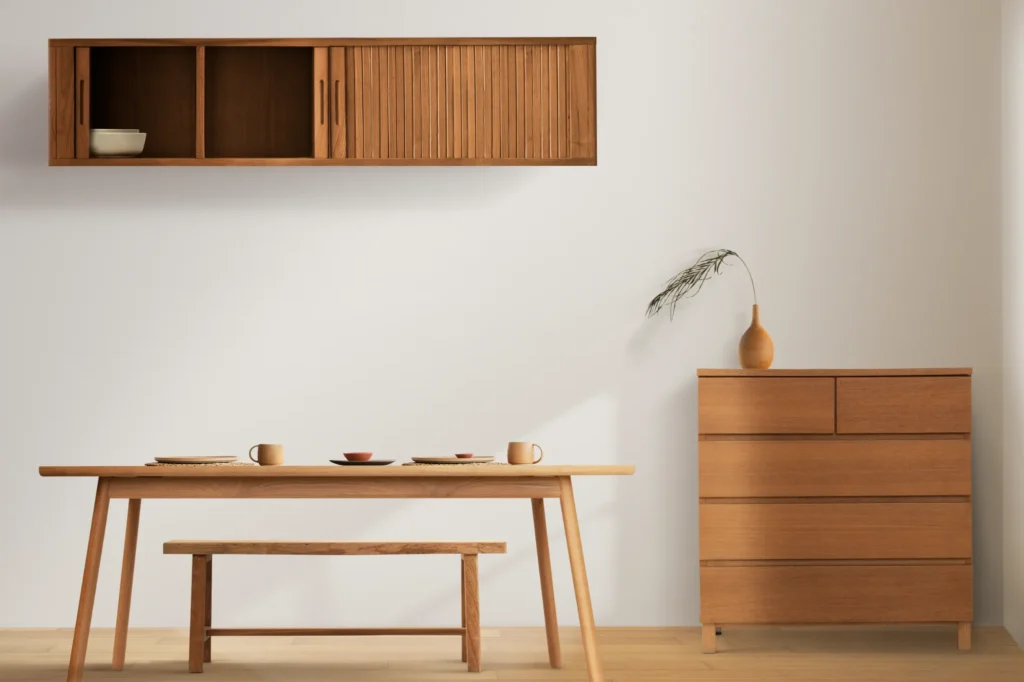
Defining Home Interior Design
The Intersection of Beauty and Utility Interior design, at its core, is the art of harmoniously blending aesthetics with functionality. It’s a transformative process that elevates a mere house to a unique, personalized haven, imbuing it with character, warmth, and purpose. This craft involves the skillful arrangement of furniture, color palettes, materials, and lighting to craft spaces that not only please the eye but also serve practical needs.
Central to interior design is the belief that the spaces we inhabit should enrich our everyday experiences. Stepping into a well-conceived room should evoke feelings of comfort and unity. It extends beyond the mere visual appeal; it’s about ensuring that the space along with its home décor accommodates and complements its occupants.
The Role Of Interior Designers
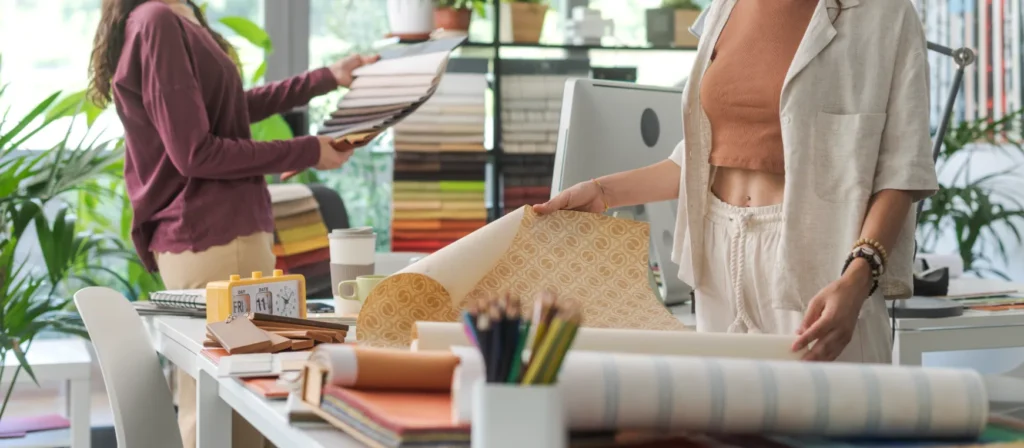
Interior designers are the conductors orchestrating the symphony of design. They possess an exceptional fusion of creative ingenuity and a deep comprehension of principles of interior design. These professionals resemble sculptors, molding the potential of a room to align with the needs and desires of those who inhabit it.
Interior designers become your collaborative partners in the journey to transform your living space. They commence by comprehending your vision, lifestyle, and preferences. Armed with this insight, they craft a home interior design that not only fulfills your aesthetic aspirations but also seamlessly integrates with your daily routines.
Consider this scenario: You desire a cozy, rustic-themed living room. An interior designer will not only guide you in selecting the right color scheme and furnishings but also ensure that the layout optimizes space and flow. Your preferences for home décorare carefully considered, with suggestions for elements like wooden beams, a stone fireplace, and earthy textiles. The end result is a room that not only looks straight out of a design magazine but also functions harmoniously within your lifestyle.
The Influence Of Principles of Interior Design
The principles of interior design serve as the guiding beacons for interior designers. They provide a structured framework for achieving the delicate equilibrium between aesthetics and functionality. Envision a room where the principle of balance is meticulously applied. The outcome is a space where elements are evenly distributed, creating a sense of stability and equilibrium.
Take “contrast” as another example. By adeptly integrating contrast through elements like light and dark, rough and smooth textures, or variations in scale, an interior designer can infuse a room with vitality and visual intrigue. In a modern, minimalist living room, a vibrant splash of color against a neutral backdrop can be a striking contrast that elevates the space from mundane to captivating.
In essence, principles of interior design serve as the instruments in the designer’s toolbox, assisting in the transformation of spaces into breathtaking works of art. These principles not only shape the ambiance and utility of a space but also metamorphose it into a mirror of the individuals who reside within it.
Principle 1: Unity
Grasping The Core Of Unity In Interior Design
In the sphere of home interior design, unity is the skill of fostering an impression of completeness and cohesiveness within a given space. It involves the art of establishing a visual connection among diverse elements, uniting them into a seamless and harmonious entirety. Much like the harmonious integration of various instruments in a captivating symphony, unity in interior design orchestrates the merging of multiple components within a room, resulting in a captivating and unified entity.
Crafting Harmony Through Unity: Forming Consistent Living Spaces
When unity is artfully employed, it functions as the adhesive that brings together the varied elements of a room. It ensures that everything in the space appears to belong, contributing to an overall sense of equilibrium and coherence. This equilibrium extends beyond colors, patterns, and materials to encompass the style and theme of the home interior design.
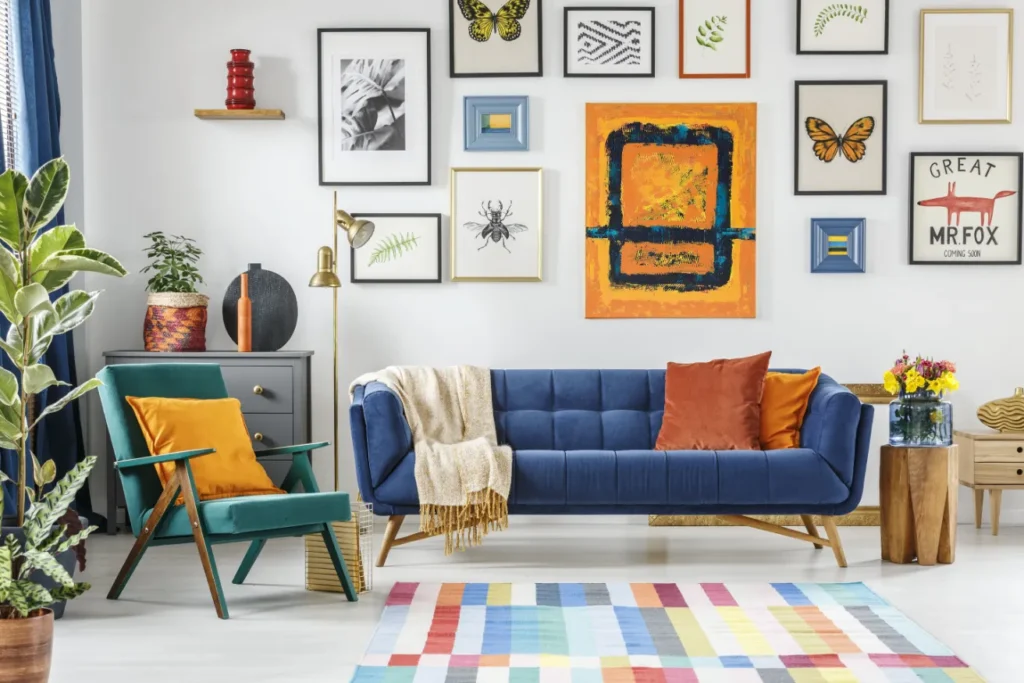
Picture a living room where the furniture, color palette, and décorative elements meld seamlessly. The outcome is a room that radiates a warm and inviting atmosphere, where each home décor element collaborates smoothly in an aesthetically pleasing manner. Unity transforms a room from a medley of disparate components into an all-encompassing and welcoming environment.
Achieving Unity: Guidance For Homeowners And Professionals
Color Scheme: Initiate by selecting a color scheme that establishes the room’s ambiance. Whether you opt for a monochromatic theme, complementary colors, or an analogous palette, consistency in color can establish a sense of unity.
Consistent Style: Choose a distinct design style or theme for your space, such as contemporary, rustic, or minimalist, and adhere to it. Ensure that all design elements, from furnishings to décor, align with this chosen style.
Pattern Repetition: Repetition of patterns within the room, through elements like throw pillows, rugs, or artwork, can generate a sense of unity, as per principles of interior design. These recurring patterns link various elements, forming a cohesive appearance.
Furniture Arrangement: Be mindful of the furniture layout. Organize it to promote unity and balance, avoiding overcrowding and aiming for a harmonious flow within the room.
Scale and Proportion: Consider the size and proportion of your furnishings. A balance in the dimensions and shapes of furniture pieces is essential for achieving unity.
For instance, in a bedroom with a beach theme, a color scheme of soft blues and sandy neutrals, combined with driftwood furniture and coastal home décor, fosters a unified and serene ambiance. The key lies in preserving a consistent theme throughout the room.
In essence, unity serves as the thread that binds a space together, ensuring it feels whole, harmonious, and aesthetically pleasing. Whether you’re a homeowner or a design professional, applying this principle of interior design can metamorphose any room into a delightful and well-arranged living space.
Principle 2: Proportion
Understanding The Principle Of Proportion
Proportion in home interior design refers to the art of balancing the size, shape, and quantity of various elements within a space. It’s about ensuring that these elements relate harmoniously to one another, creating a sense of equilibrium and visual appeal. Just as a well-proportioned piece of music or artwork resonates with our senses, proportion in interior design captivates our eyes and provides a sense of order.
The Significance Of Proper Proportions: Striking A Balance
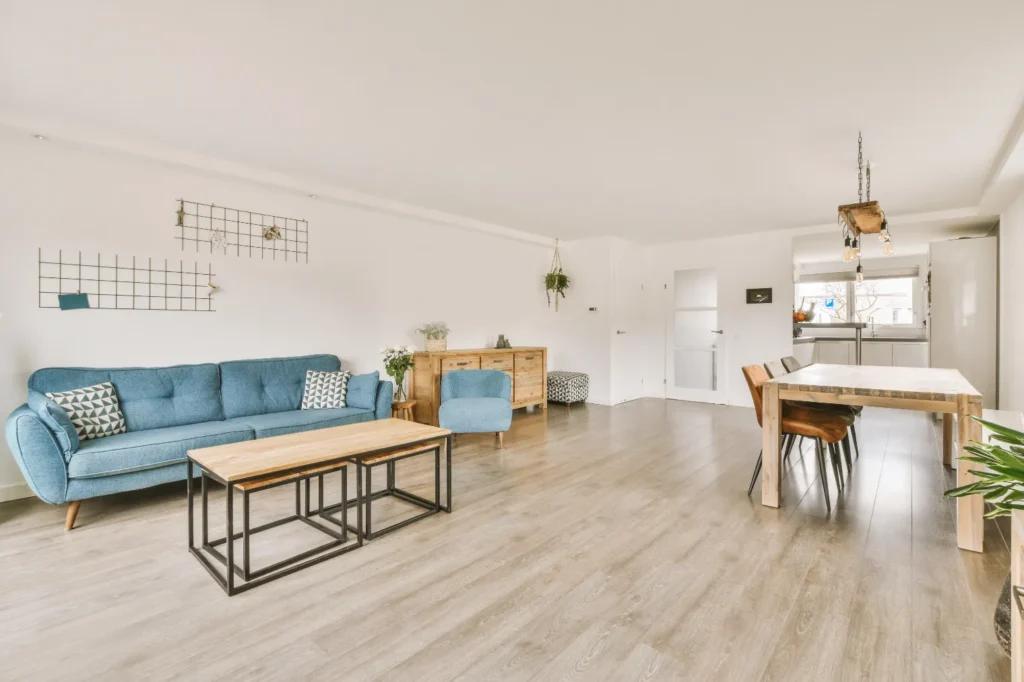
Achieving proper proportions in a room is vital as it lays the foundation for visual comfort and aesthetic harmony. When elements are out of proportion, a space may feel unsettling or awkward. Imagine a room where the furniture is oversized for the space, making it appear cramped and uncomfortable. Alternatively, undersized furniture can make a home interior design feel empty and disconnected.
Proportion is not just about the size of furniture and décor; it extends to the placement and arrangement of these elements. It influences the flow and functionality of a room. Proper proportions contribute to a room’s functionality and visual appeal, making it a comfortable and inviting place to be.
Maintaining Proportion: Practical Tips And Tricks
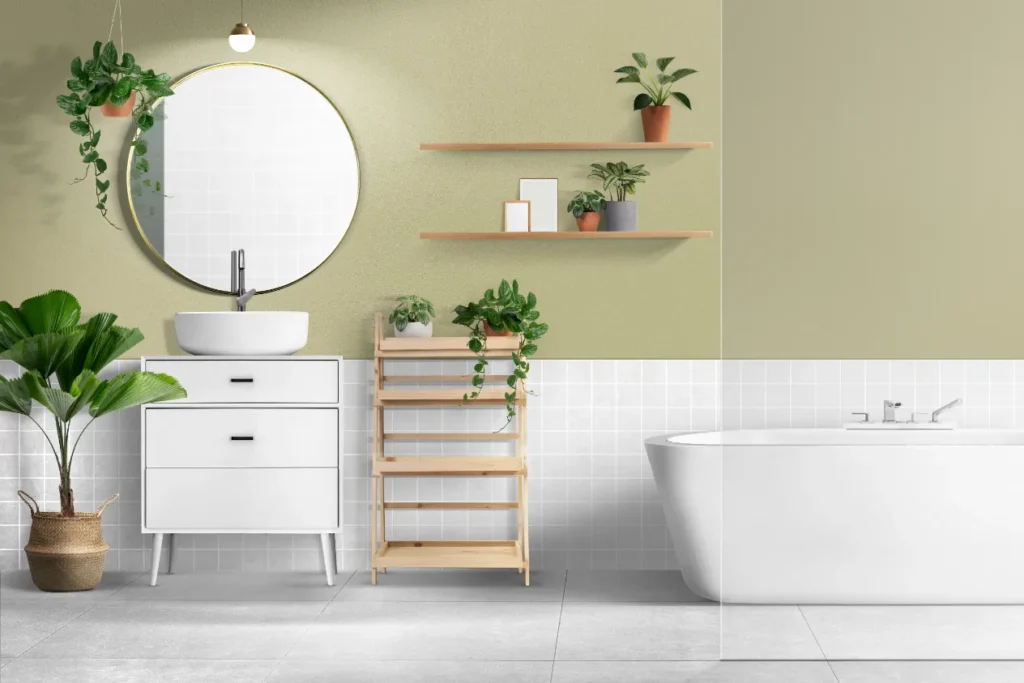
Scale Your Furniture: When selecting furniture, consider the size of your room. Large furniture can overwhelm a small space, so opt for appropriately scaled pieces. Conversely, in a spacious room, avoid using undersized furniture, as it may appear lost.
Balance of Sizes: A well-proportioned room includes a balance of different-sized elements. For example, if you have a large sofa, complement it with appropriately sized coffee tables and side tables.
Arrangement: Pay attention to the arrangement of furniture. Avoid clustering all large pieces on one side of the room and smaller pieces on the other. Distribute them evenly to maintain balance.
Use Wall Space: Wall art and home décorshould be proportionate to the wall they adorn. Large, empty walls can benefit from oversized artwork, while smaller pieces suit more intimate spaces.
Lighting: Choose lighting fixtures that fit the scale of the room. Oversized chandeliers can add grandeur to a spacious dining area, while compact fixtures are apt for cozy nooks.
Use Mirrors: Mirrors can be used to create the illusion of more space and enhance proportion. Placing a large mirror on one wall can visually expand the room.
For instance, in a small dining room, choosing a round dining table rather than a rectangular one can help maintain proportion and facilitate better traffic flow. Additionally, complementing the table with appropriately sized chairs completes the harmonious picture.
In conclusion, proportion is one of the fundamental principles of interior design that dictates the equilibrium and coherence of a space. Ensuring the right proportions among various elements and their arrangement not only enhances visual appeal but also fosters a sense of comfort and functionality. Whether you’re designing a cozy living room or a spacious dining area, understanding and implementing proportion is crucial in achieving a harmonious and inviting living space.
Principle 3: Balance
The Significance Of Balance In Interior Design
The significance of balance in interior design is undeniable, as it is a fundamental factor in crafting visually pleasing and well-coordinated spaces. It involves the even distribution of visual weight within a room, ensuring that no single element dominates or feels out of place.
Balance is the compass that guides you in achieving equilibrium, both in terms of aesthetics and functionality. Proper balance ensures that a room feels stable and welcoming. An imbalanced room can evoke a sense of discomfort or restlessness.
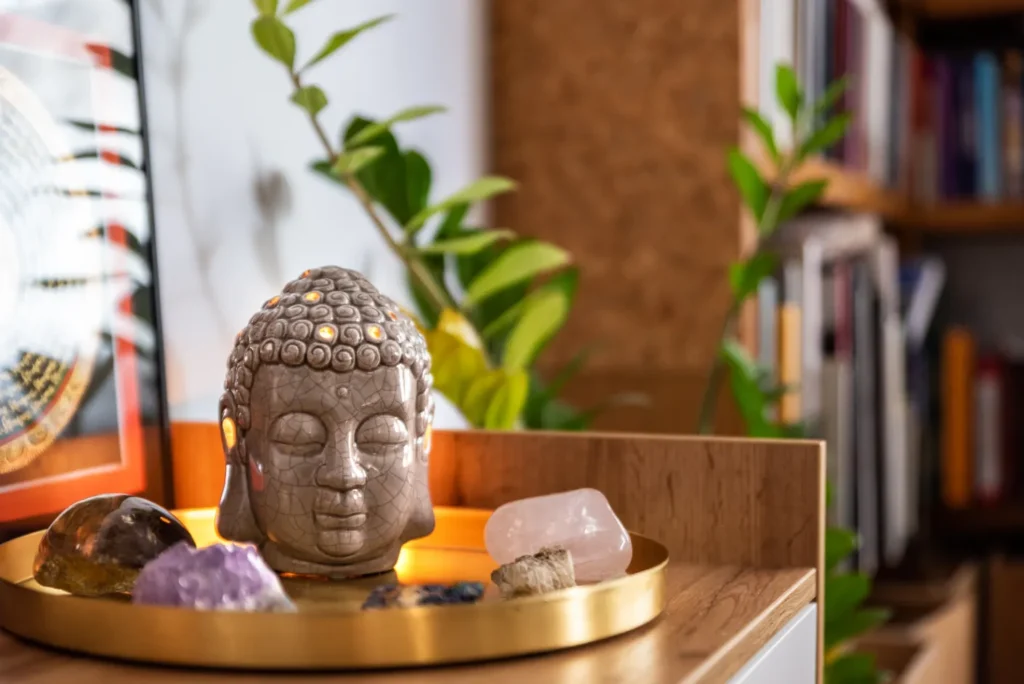
Varieties Of Balance
Symmetrical Balance: Symmetrical balance materializes when you position indistinguishable or almost identical elements on opposite sides of an imaginary central axis within a space. Imagine it as a reflection in a mirror. A typical illustration is a room with matching nightstands, lamps, and artwork on each side of the bed. It conveys an impression of organization and décorum.
Asymmetrical Balance: Asymmetrical balance is about achieving equilibrium with different elements that have equal visual weight but aren’t identical. For instance, you could balance a large, plush sofa with a group of smaller, complementary chairs, creating a balanced composition without mirroring. Asymmetrical balance adds a touch of informality and dynamism to a home interior design.
Effective Use Of Balance In Home Interior Design
Symmetrical Balance: In a traditional dining room, you can use symmetrical balance by placing matching dining chairs on either side of a long dining table. This arrangement imparts a sense of elegance and formality to the space.
Asymmetrical Balance: In a modern living room, you can achieve asymmetrical balance by pairing a large, contemporary sofa with a variety of differently sized and shaped coffee tables. The overall composition feels visually balanced yet retains a sense of dynamic interest.
Vertical Balance: Balance isn’t limited to just horizontal elements. Consider the height of elements in a room, too. For example, you can balance a tall bookcase with a taller potted plant on one side and a series of shorter home décor items on the other.
Color Balance: Balance extends to color as well. In a room with bold, vibrant colors, you can balance the color scheme by incorporating neutrals or softer hues to prevent it from feeling overwhelming.
Texture Balance: Textures can also play a significant role in achieving balance. For instance, in a bedroom with a plush, upholstered headboard, you can balance the softness with sleek, metallic bedside tables. Therefore, it is an indispensable aspect of home interior design, influencing both the visual and emotional aspects of a room.
Conclusion
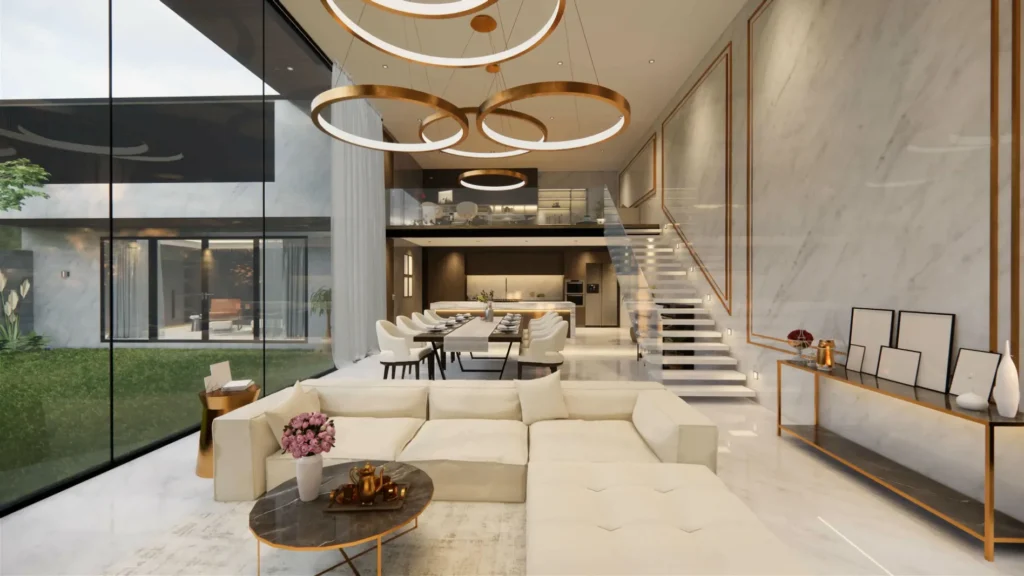
In the captivating world of home interior design, where aesthetics meet functionality, unity, proportion, and balance stand as the guiding stars, illuminating the path to creating spaces that are not only visually appealing but also deeply practical. For both homeowners with an eye for style and interior design professionals honing their craft, these principles of interior design are the keys to unlocking the true potential of living spaces.
Our homes, much like us, are unique and ever-evolving entities. They are more than just physical structures; they are reflections of our personalities and a canvas for our preferences. The art of interior design transforms mere houses into warm, welcoming homes that cradle our dreams and host the stories of our lives.
Unity, the first principle, orchestrates the elements in a room into a harmonious whole, ensuring that everything functions in unison, exuding warmth and appeal. Proportion, the second principle, is the art of balancing size, shape, and quantity to maintain harmony and visual comfort. It is the backbone of creating spaces that are not only visually pleasing but also functional.
Balance, the third principle, brings equilibrium to the design, creating spaces that are both organized and inviting. Whether through the use of symmetrical or asymmetrical balance, it ensures that no single element dominates, achieving an appealing and harmonious outcome. Interior design is always changing because of new trends, materials, and personal styles. When you use these principles, you can make any space a comfortable, stylish, and personal place to enjoy.
The White Frame is not just another interior design and build firm, we are proud to offer you the professional service levels of global standards and a deep respect for both contemporary and traditional interior design, Headquartered in Gurgaon and extend our services across diverse cities, including Gurgaon, South Delhi, Delhi NCR, North India, Mumbai, Chandigarh, Jaipur, and Agra.
Our talented designers are ready to apply Unity, Proportion, and Balance to your project, turning your vision into a stunning reality. You can explore our work Here.
Get in Touch with us today!


